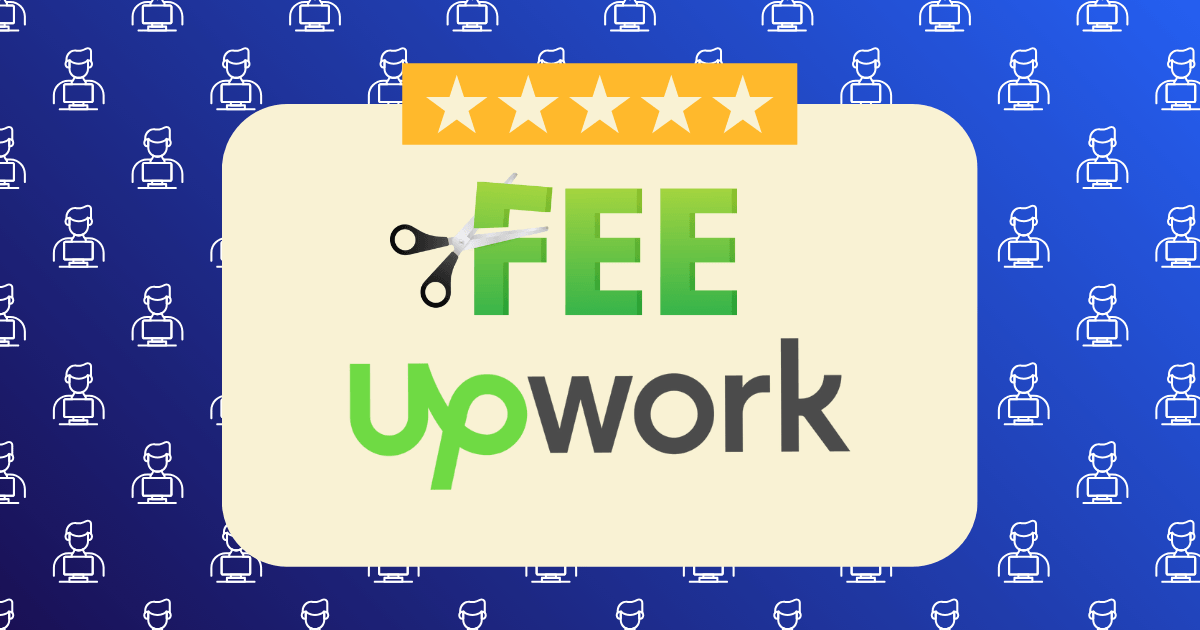Multilingual? Here’s How to Make $25/Hour as an Online Translator

In today’s interconnected global economy, language skills represent a significantly undervalued asset. While many multilingual individuals view their abilities as merely personal or cultural attributes, these skills can be transformed into a sustainable income stream through strategic positioning in the online translation marketplace. This comprehensive guide examines how to leverage your existing language capabilities to build a $25+/hour translation business—without requiring additional degrees or certifications.
The Translation Market: Understanding the Opportunity
The digital translation market has undergone a profound transformation in recent years. According to the U.S. Bureau of Labor Statistics, the median hourly wage for translators reached $24.92 in 2020, with projected growth significantly outpacing average occupations. More importantly, the shift toward remote work has democratized access to translation opportunities, creating an ideal environment for side hustlers.
Several key market dynamics make this an optimal time to enter the field:
1. Expanding Global Commerce
As businesses increasingly operate across borders, translation needs have expanded beyond traditional document translation to include:
- E-commerce product descriptions
- Marketing materials
- Customer support communications
- Social media content
- Website localization
This diversification creates numerous entry points for new translators with varied interests and strengths.
2. Limitations of AI Translation
Despite advances in machine translation, research from the Common Sense Advisory indicates that 76% of consumers prefer human-translated content when making purchasing decisions. This human preference creates a sustainable market for quality translation despite technological advancement.
Key areas where human translators maintain significant advantages include:
- Culturally nuanced marketing content
- Technical documentation requiring subject expertise
- Creative and brand-focused materials
- Legal and compliance documents
- Content requiring emotional intelligence
3. Flexible Work Arrangements
The translation marketplace has evolved to accommodate various work preferences:
- Project-based assignments
- Ongoing retainer relationships
- Agency partnerships
- Direct client relationships
- Platform-mediated opportunities
This flexibility allows translators to design income streams aligned with their availability and financial goals.
The Psychological Advantage: Why Multilingual Individuals Undervalue Their Skills
Before addressing practical strategies, it’s important to understand the psychological barriers that often prevent multilingual individuals from monetizing their skills. Research in cognitive psychology suggests that we systematically undervalue skills acquired without formal education—particularly those gained through cultural exposure or family background.
This “familiarity discount” leads many multilingual individuals to assume their language abilities aren’t marketable without additional credentials. In reality, natural fluency often provides advantages over academically-acquired language skills, particularly in:
- Colloquial expressions and idioms
- Cultural context understanding
- Natural-sounding dialogue
- Regional variations and dialects
- Emotional and tonal nuances
Recognizing the market value of your existing language skills represents the first step toward building a profitable translation business.
Essential Skills Assessment: Are You Ready for Translation Work?
Before entering the marketplace, honestly assess your capabilities across these five dimensions:
1. Language Proficiency
Evaluate your abilities in both languages:
Source Language (what you’re translating from):
- Reading comprehension of complex texts
- Understanding of idiomatic expressions
- Familiarity with specialized vocabulary
Target Language (what you’re translating to):
- Written fluency and grammatical precision
- Vocabulary breadth and specificity
- Ability to maintain natural-sounding expression
Self-Assessment Tool: Try translating a newspaper article, then have a native speaker evaluate the result for naturalness and accuracy.
2. Writing Ability
Translation quality depends heavily on writing skills in your target language:
- Grammar and syntax mastery
- Clear and concise expression
- Adaptation of tone and style
- Punctuation and formatting conventions
Self-Assessment Tool: Compare your writing to professional content in your target language, noting any patterns of weakness.
3. Subject Matter Knowledge
Certain fields command premium rates due to specialized vocabulary:
- Legal terminology
- Medical and scientific concepts
- Technical specifications
- Financial documentation
- Marketing and branding language
Strategic Insight: Even without formal training, you may have subject expertise through work experience, hobbies, or personal interests that can be leveraged for specialized translation.
4. Cultural Competence
Beyond vocabulary, successful translation requires cultural understanding:
- Cultural references and allusions
- Appropriate formality levels
- Humor and emotional expression
- Cultural sensitivities and taboos
- Regional variations within languages
Self-Assessment Tool: Evaluate your ability to explain cultural concepts from one language to speakers of the other.
5. Technical Skills
Modern translation work requires familiarity with:
- Word processing and formatting
- File management systems
- Basic HTML (for website translation)
- Email and communication platforms
- Time tracking and project management
Minimum Requirements: Proficiency with Microsoft Word, Google Docs, and email communication is essential for entry-level work.
Platform Strategy: Where to Find $25/Hour Opportunities
The translation marketplace spans multiple platforms, each with distinct advantages. This strategic approach focuses on platforms most likely to yield $25+/hour rates:
1. Specialized Translation Marketplaces
These platforms cater specifically to language professionals:
ProZ.com
- Advantages: Industry-specific, direct client relationships, higher rates
- Barrier to Entry: Profile verification, competitive bidding
- Rate Potential: $0.08-$0.15 per word ($25-40/hour equivalent)
- Strategy: Complete your profile with specialized subject areas and participate actively in forums to build visibility
TranslatorsCafe
- Advantages: Translation-focused, international client base
- Barrier to Entry: Moderate competition, verification process
- Rate Potential: $0.06-$0.12 per word ($20-35/hour equivalent)
- Strategy: Set up job alerts for your language pairs and respond quickly to new opportunities
2. General Freelance Platforms
These platforms offer diverse project types beyond translation:
Upwork
- Advantages: High volume of opportunities, established payment protection
- Barrier to Entry: Competitive proposal process, platform fees
- Rate Potential: $15-40/hour (explicitly hourly) or $0.05-$0.10 per word
- Strategy: Create a niche-focused profile and start with smaller projects to build ratings
Fiverr
- Advantages: Client-initiated projects, package-based pricing
- Barrier to Entry: Standing out among competitors
- Rate Potential: $25-125 per project (hourly equivalent varies)
- Strategy: Create specialized gig packages for different types of translation (marketing, technical, etc.)
3. Direct Agency Relationships
Translation agencies serve as intermediaries between clients and translators:
Lionbridge
- Advantages: Consistent work volume, established processes
- Barrier to Entry: Testing and qualification process
- Rate Potential: $0.05-$0.08 per word ($15-25/hour equivalent)
- Strategy: Apply for their freelance translator program and complete their assessment process
Gengo
- Advantages: Straightforward onboarding, regular work availability
- Barrier to Entry: Language proficiency tests
- Rate Potential: $0.03-$0.08 per word ($10-25/hour equivalent)
- Strategy: Use as supplementary income while building higher-paying client relationships
4. Industry-Specific Opportunities
Certain industries have unique translation needs:
Legal Translation
- Platforms: Translegal, law firm websites
- Rate Potential: $0.10-$0.20 per word ($30-60/hour equivalent)
- Entry Strategy: Start with simpler legal documents like basic contracts or terms of service
Medical Translation
- Platforms: MCIS Language Solutions, healthcare providers
- Rate Potential: $0.12-$0.25 per word ($35-75/hour equivalent)
- Entry Strategy: Begin with patient information materials before advancing to clinical documentation
Profile Development: Creating a Compelling Translator Identity
Your online presence significantly impacts your earning potential. These elements create a profile that commands $25+/hour rates:
1. Strategic Specialization
Rather than positioning as a general translator, focus on specific:
- Industry Verticals: E-commerce, tourism, technology, etc.
- Content Types: Marketing materials, technical documentation, subtitling
- Audience Segments: B2B communication, consumer marketing, academic content
Example Positioning: “Spanish-English translator specializing in SaaS marketing content and user interfaces” is more compelling than “Spanish-English translator.”
2. Portfolio Development
Without previous paid work, create demonstrative samples:
- Translate sections of websites in your target industry
- Create before/after examples showing improved translations
- Develop case studies showing your translation process
- Translate public domain content relevant to your specialization
Strategic Approach: Create 3-5 portfolio pieces specifically aligned with your specialization rather than numerous generic samples.
3. Credential Presentation
Present your language background effectively:
- Emphasize natural bilingualism if applicable
- Highlight relevant education or cultural experience
- Showcase any specialized knowledge or industry experience
- Include language proficiency certifications if available
Psychological Insight: Frame natural language acquisition as an advantage rather than a limitation, emphasizing cultural fluency and authentic expression.
4. Social Proof Development
Gather evidence of your capabilities through:
- Testimonials from initial clients (even unpaid projects)
- Ratings and reviews on freelance platforms
- Participation in translation communities
- Language proficiency test results
Starting Strategy: Offer free translation reviews or small projects to colleagues or local businesses in exchange for testimonials.
Pricing Strategy: Commanding $25/Hour Consistently
Achieving consistent $25/hour earnings requires strategic pricing approaches:
1. Per-Word vs. Hourly Pricing
Translation work typically uses per-word pricing, requiring conversion to ensure hourly targets:
Formula: (Desired hourly rate ÷ Words per hour) = Minimum per-word rate
For example:
- At 500 words/hour: $25 ÷ 500 = $0.05 per word minimum
- At 300 words/hour: $25 ÷ 300 = $0.083 per word minimum
Productivity Insight: Most professional translators average 300-500 words per hour for quality work, with rates varying by language pair and specialization.
2. Value-Based Package Creation
Package your services to emphasize value rather than time:
Basic Website Translation Package:
- Homepage and 5 key pages translation
- Meta description and title tag translation
- Basic SEO keyword adaptation
- Package Price: $250 (equivalent to $25/hour for 10 hours)
Marketing Content Package:
- 5 product descriptions (up to 200 words each)
- 3 promotional emails
- 2 landing pages
- Package Price: $300 (equivalent to $25/hour for 12 hours)
Strategic Advantage: Packages shift client focus from hourly rates to deliverables and outcomes.
3. Progressive Pricing Strategy
Implement a staged pricing approach as you build experience:
Phase 1: Portfolio Building (1-3 months)
- Target Rate: $15-20/hour equivalent
- Focus: Gathering testimonials and reviews
- Strategy: Overdeliver on quality and responsiveness
Phase 2: Established Provider (3-6 months)
- Target Rate: $25-30/hour equivalent
- Focus: Developing specialization and repeat clients
- Strategy: Emphasize unique value proposition
Phase 3: Specialized Expert (6+ months)
- Target Rate: $30-50/hour equivalent
- Focus: Working with premium clients in niche areas
- Strategy: Demonstrate specialized knowledge and results
Productivity Systems: Maximizing Hourly Earnings
Achieving consistent $25/hour earnings requires operational efficiency:
1. Translation Memory Tools
These tools store previously translated segments for reuse:
Efficiency Impact: Translation memory tools typically increase productivity by 30-50% for repetitive content, directly increasing hourly earnings.
2. Terminology Management
Maintain consistent terminology across projects:
- Create client-specific glossaries
- Develop industry-specific term bases
- Use spreadsheets or specialized terminology tools
- Reference style guides for consistent choices
Implementation Tool: Use Glossary Tech or Excel spreadsheets to maintain terminology databases.
3. Productivity Tracking
Monitor your actual hourly earnings to optimize pricing:
- Track time spent on projects (including research and revision)
- Calculate effective hourly rates for different content types
- Identify efficiency bottlenecks
- Adjust pricing based on actual productivity
Recommended Tool: Toggl Track for time monitoring and project profitability analysis.
4. Batch Processing
Group similar translation tasks to increase efficiency:
- Translate multiple similar documents in one session
- Batch research for technical terminology
- Schedule dedicated revision sessions
- Group administrative tasks like invoicing
Productivity Gain: Batch processing typically improves efficiency by 15-25% compared to context-switching between different projects.
Client Acquisition: Building a Sustainable Client Base
Securing consistent work at $25/hour requires strategic client acquisition:
1. The Ladder Approach
Use a strategic progression to reach premium clients:
Entry-Level Platforms:
- Gengo, Unbabel, TextMaster
- Purpose: Build experience and reviews
- Strategy: Maximize efficiency to achieve target hourly rates
Mid-Level Opportunities:
- Upwork, Fiverr Pro, TranslatorsCafe
- Purpose: Develop specialized portfolio
- Strategy: Focus on specific content types or industries
Premium Relationships:
- Direct clients, specialized agencies, ongoing retainers
- Purpose: Establish stable, high-value relationships
- Strategy: Demonstrate business impact beyond linguistic accuracy
2. Inbound Marketing Strategy
Create a system that attracts clients to you:
- LinkedIn Optimization: Create a profile highlighting your specialization
- Content Creation: Develop articles about translation in your specialty
- Community Participation: Contribute to industry forums and groups
- SEO-Focused Website: Create a simple professional site targeting specific translation needs
Focus Strategy: Target long-tail keywords like “Spanish translator for SaaS companies” rather than competitive terms like “Spanish translator.”
3. Direct Outreach Framework
Proactively contact potential clients with this approach:
Research Phase:
- Identify businesses expanding into markets matching your language pairs
- Find companies with poor existing translations
- Research businesses in your specialized industries
Outreach Structure:
- Brief introduction highlighting language pair and specialization
- Specific observation about their current content or expansion
- Clear value proposition (not focused on translation but on business outcomes)
- Simple call to action (15-minute consultation, sample translation)
Conversion Technique: Offer a free “translation audit” of existing materials rather than immediately pitching services.
Skill Development: Increasing Your Market Value
Continuous improvement directly impacts earning potential:
1. Language Pair Expansion
Strategically add language combinations:
Vertical Expansion:
- Add specialized skills within your existing language pairs
- Example: Spanish-English general → Spanish-English legal/medical/technical
Horizontal Expansion:
- Add related languages with significant overlap
- Example: Spanish → Portuguese, French → Italian
Strategic Focus: Prioritize depth (specialization) over breadth (multiple languages) for higher hourly rates.
2. Technology Integration
Develop complementary technical skills:
- CAT Tool Proficiency: Master tools like SDL Trados or MemoQ
- SEO Knowledge: Learn multilingual SEO principles
- Content Management Systems: Gain experience with WordPress, Shopify, etc.
- Subtitling Software: Learn tools like Aegisub for video content
Value Proposition: Position yourself as a “technical translator” who can work directly within clients’ systems.
3. Subject Matter Expertise
Develop knowledge in high-value domains:
- Follow industry publications in your target specialization
- Take basic online courses in technical fields
- Join professional associations in your specialty area
- Build relationships with subject matter experts
Application Strategy: Create specialized glossaries demonstrating your subject expertise to potential clients.
The Psychology of Success: Mindset for $25/Hour Translators
Achieving consistent premium rates requires specific psychological approaches:
1. Value Perception Management
How you present your services significantly impacts perceived value:
- Frame translation as business investment rather than expense
- Emphasize outcomes (increased sales, compliance, user satisfaction) over process
- Position yourself as a communication consultant, not just a translator
- Use case studies to demonstrate concrete results
Communication Example: “I help SaaS companies increase conversion rates in Spanish-speaking markets through culturally-adapted marketing content” versus “I translate websites from English to Spanish.”
2. Confidence in Negotiation
Many translators undercharge due to confidence issues:
- Prepare specific justifications for your rates
- Practice responding to price objections
- Set clear boundaries on scope and revisions
- Be willing to decline underpaid opportunities
Negotiation Script: “My rate reflects my specialization in [industry] content and my track record of delivering [specific outcome]. I understand this might be higher than some options, but the quality difference directly impacts your [business metric].”
3. Professional Identity Development
How you view yourself impacts client perception:
- Identify as a language professional rather than someone who “happens to know two languages”
- Join professional translation associations
- Participate in continuing education
- Network with other language professionals
Identity Reinforcement: Create professional business cards, email signature, and online presence that reflect your translator identity.
Case Study: From Bilingual to $25/Hour Translator in 90 Days
Consider Maria’s journey from bilingual individual to professional translator:
Starting Point:
- Native Spanish speaker with fluent English
- No formal translation experience
- Background in customer service
Month 1: Foundation Building
- Created profiles on Gengo and Fiverr
- Developed 5 portfolio samples in e-commerce product descriptions
- Completed 15 small projects at $0.03-$0.04/word
- Average hourly equivalent: $12-15
Month 2: Specialization Development
- Focused exclusively on e-commerce and marketing content
- Created specialized packages for product listings
- Raised rates to $0.05-$0.06/word on new projects
- Developed a simple professional website
- Average hourly equivalent: $18-22
Month 3: Premium Positioning
- Created case study showing 20% conversion improvement from properly translated product listings
- Established profiles on ProZ and TranslatorsCafe
- Began direct outreach to e-commerce businesses
- Secured first monthly retainer client at $500/month
- Average hourly equivalent: $25-30
Key Success Factors:
- Focused specialization rather than general translation
- Systematic portfolio development
- Progressive pricing strategy
- Emphasis on business outcomes
- Direct client relationship development
Conclusion: Your Path to $25/Hour Translation Income
The journey to consistent $25/hour translation earnings is accessible to anyone with strong multilingual abilities and systematic implementation. The key insights from this guide include:
- Market Value Recognition: Your language skills likely have significantly higher market value than you realize
- Strategic Specialization: Focusing on specific content types or industries dramatically increases earning potential
- Platform Progression: Systematically advancing from entry-level to premium platforms builds sustainable income
- Efficiency Systems: Implementing productivity tools and processes directly impacts hourly earnings
- Value-Based Positioning: Presenting translation as a business solution rather than a commodity service justifies premium rates
With consistent application of these principles, you can transform your multilingual abilities from a personal asset into a sustainable income stream—achieving the $25/hour threshold within 2-3 months of focused effort.
The most significant barrier isn’t market opportunity or competition, but rather the psychological leap from viewing your language skills as ordinary to recognizing their exceptional market value. Make this shift, implement the strategies outlined here, and your translation side hustle can quickly become a reliable source of flexible, location-independent income.







